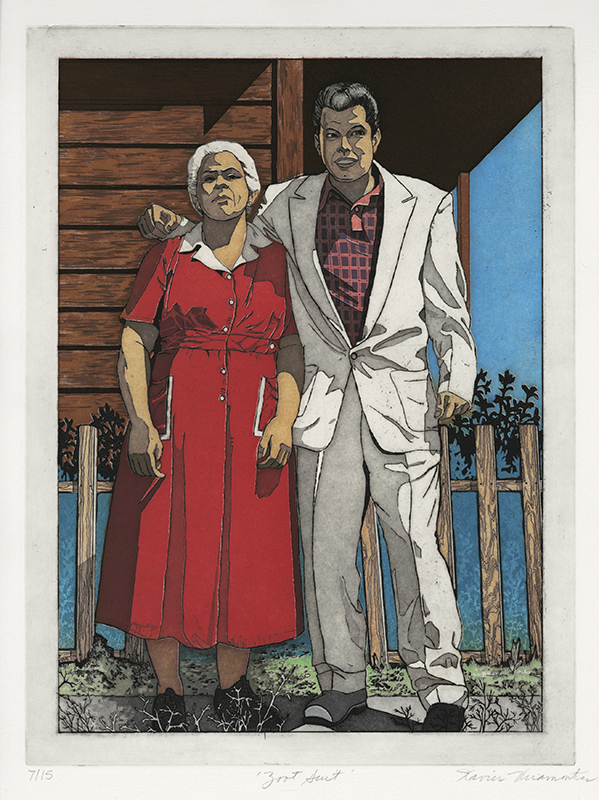
19th, 20th & 21st Century Fine Prints
707-546-7352 · fax 707-546-7924 · web: www.annexgalleries.com · email: artannex@aol.com
Zoot Suit by Xavier Viramontes

Zoot Suit
Xavier Viramontes
Zoot Suit
Xavier Viramontes
1943 - PRESENT (biography)Xavier Viramontes frequently uses art to explore his family history and pay homage to his Chicano lineage. The word “chicano”, once a slur used by white Americans towards Mexican people, was embraced and reclaimed by members of the Pachuco subculture of Los Angeles in the 1940s. Their style of dress became an expression of pride and individualism, and one such outfit became the Zoot Suit.
The Zoot Suite has its roots in the African American Hepcat subculture of the first half of the 20th century. Exaggerated tailoring, ample fabric, bold patterns, and wide-brimmed fedoras were used by young Black jazz musicians as a form of self expression, followed quickly by their fans, many of them poor and relegated to living in slums. Cab Calloway was among the most noted for adopting the Zoot Suit, which he regarded as a patriotic response to the tight, prim uniforms of Nazis. The style was soon adopted by Mexican American Pachucos, as well as Japanese, Italian, and Filipino Americans; before long, young white Americans also began sporting the style.
By 1943, however, the Zoot Suit became a symbol of rebellion by white conservatives. The War Rationing Board effectively banned the suits, claiming they were a waste of fabric. The suits were openly labeled by racist Americans as unpatriotic, and on June 3rd of that year a series of violent riots began as servicemen and white Angelenos began attacking primarily Latino and Mexican Zoot Suiters, including children. Riots broke out for five days; not long after, the city of Los Angeles declared the suits illegal. More riots broke out across the country.
Today, the suit remains a symbol of resistance and self expression in Chicano culture. Despite years of commercialization and appropriation of the style, it remains a powerful reminder of one of the most important times in Los Angeles history. This composition was also done as a screenprint for the 1977 calendar La Historia de California, for the month of October, to illustrate the political significance of the Zoot Suit Riots to the Chicano culture of California. Another etching, titled "Mother's Day Flashback", features the same figures with a different background.
